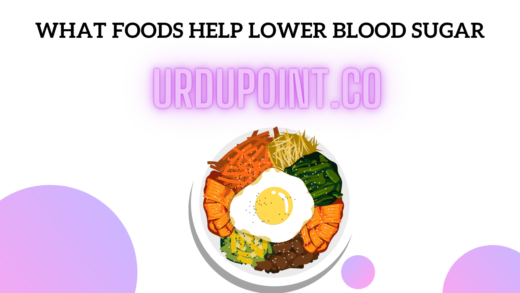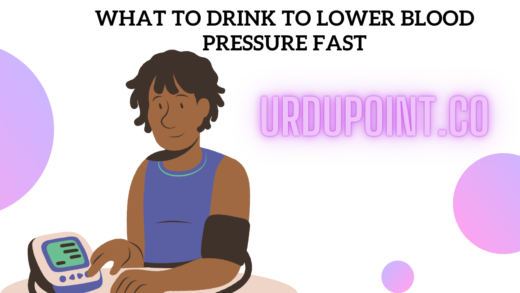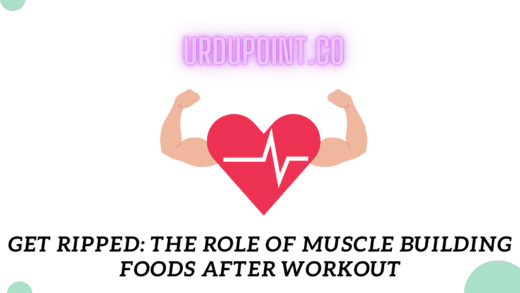Intro
Are you aware of the warning signs of high cholesterol? It’s important to understand these indicators so you can take proactive steps to manage your health. In this blog post, we will decode high cholesterol and explore the 5 warning signs you should be aware of. Let’s dive in and learn more about this silent health influencer.
Unpacking Cholesterol: The Silent Health Influencer
Picture cholesterol as the quiet character in the story of your body who plays a much bigger role than you might initially think. This waxy, fat-like substance, which could easily win an award for “Best Supporting Actor” in the drama that is our body’s daily functioning, is both a necessity and a nemesis. Cholesterol sneaks into every cell, whispering secrets of cellular construction and hormone production. Your body, the ultimate DIY enthusiast, actually produces all the cholesterol it needs to carry out these critical functions.
But here’s where the plot thickens: just like in any great tale, too much of any character can shift the balance, turning our protagonist into an antagonist. When we introduce external sources of cholesterol through our diet—think the villainous duo of saturated and trans fats—they can team up with our body’s naturally produced cholesterol, causing a dramatic buildup in our bloodstream. This is where cholesterol flips its role, morphing from silent health influencer to potential health risk.
Imagine the inside of your arteries as busy highways where cholesterol likes to take leisurely drives. Too much cholesterol clogs these highways, creating traffic jams in the form of plaque build-up. This is the turning point in our story, where the risk of heart disease, stroke, and other cardiovascular calamities starts to rise, turning our silent influencer into a loud problem that demands attention.
But, like any good narrative, understanding the character’s background gives us power—the power to change the ending of our story. Knowing that cholesterol isn’t just a villain but a necessary part of our body’s functioning allows us to approach it with the nuance and respect it deserves. It’s about finding that sweet spot, where cholesterol can resume its role as a silent benefactor, working behind the scenes to keep us healthy, rather than as an overt threat to our well-being.
This understanding empowers us to make informed choices about our diet and lifestyle, ensuring that cholesterol gets to play its part in our body’s complex system without stealing the show. So, as we continue this journey of health and discovery, let’s keep in mind the dual nature of cholesterol, ensuring it remains the hero in our story, not the villain.
The Telltale Heart: Chest Pain and Cardiovascular Red Flags
In the grand narrative of our well-being, our heart plays the lead role, tirelessly beating to the rhythm of life’s ups and downs. Yet, when high cholesterol sneaks onto the scene, it can cast a shadow over this vital organ, introducing chest pain or discomfort as its menacing sidekicks. This duo may not always be the most dramatic characters, initially appearing in subtle cameos during physical exertion or moments of stress. However, they’re certainly not to be ignored, for they hint at a potential plot twist involving heart disease or angina.
Imagine, if you will, your arteries as the scenic routes of a sprawling, bustling city—your body. Now, picture cholesterol as an unchecked urban sprawl, cluttering these paths with plaque and debris, turning swift highways into congested byways. In such a scenario, chest pain acts as the red flag, waving urgently to signal the distress of a heart struggling to pump life-giving blood through narrowed streets.
This discomfort might feel like a squeezing sensation, a pressing tightness that grips the chest, or an unsettling ache that refuses to be ignored. It’s your body’s way of sending an SOS, alerting you to the internal traffic jam caused by high cholesterol. The heart, in its quest for oxygen-rich blood, finds itself gasping amidst the blockages, and in response, it signals the only way it knows how—through pain.
But fear not, for this tale doesn’t end in tragedy. Recognizing these cardiovascular red flags for what they are—an early warning system—can empower you to seek the directorial advice of healthcare professionals. These experts, akin to seasoned script supervisors, can help reroute the story, guiding you towards a narrative of healing and health.
It’s crucial, then, to listen intently to the whispers of your body. Should chest pain or discomfort make a cameo in your life, especially in scenes marked by activity or emotional intensity, let it cue your next action: seeking medical attention. Such a proactive approach is akin to catching a minor glitch before it spirals into a major plot hole, ensuring that your heart remains the hero of your story, rather than a victim of high cholesterol’s villainous capers.
As we journey through the chapters of our health, understanding the signals and stories our bodies share is key. Chest pain, in the context of high cholesterol, is a narrative twist that demands attention, urging us to turn the page towards proactive health management and a heart that beats strong, unencumbered by the perils of plaque. In doing so, we ensure our story—one of vitality and wellness—continues with its rightful protagonist leading the way.
Numbness and Tingling: Peripheral Vascular Symptoms
Embark with us on an intriguing exploration of the lesser-known emissaries of high cholesterol: numbness and tingling in your extremities. These mysterious sensations, akin to the subtle flickers of a candle in a dimly lit room, are your body’s way of signaling a clandestine struggle within. Picture, if you will, the vast and intricate network of arteries and veins as the bustling streets and alleyways of an old, enchanting city. Now, imagine that high cholesterol has caused some of these thoroughfares to narrow and some paths to become blocked, akin to a sudden parade that halts the regular flow of traffic.
This disruption in circulation can lead to the curious sensation of numbness or tingling in your hands or feet, much like the feeling of pins and needles after sitting in one position for too long. It’s as if parts of your body have fallen asleep, momentarily disconnected from the brain’s command center. This phenomenon, while often overlooked as a fleeting oddity, is a whisper from within, suggesting that all might not be well in the hidden corridors of your vascular system.
Why does this happen, you ask? Well, when cholesterol builds up in the arteries, it’s like adding unexpected speed bumps on a road: it slows down the usual traffic. In the case of your body, this means that the blood, that vital carrier of oxygen and nutrients, finds its journey impeded. The result is a reduction in the blood flow to the extremities, leading to the ghostly sensations of numbness and tingling.
Yet, this narrative doesn’t have to take a foreboding turn. Recognizing these signs as the body’s ingenious way of flagging attention allows you to respond with curiosity and action rather than alarm. While these sensations might seem as benign as a breeze passing through an open window, they invite you to delve deeper into the story of your health, urging you to uncover the hidden truths that lie beneath the surface.
Engaging with these signals by consulting a healthcare provider can unravel the mysteries of your circulatory tale. A doctor can act as the detective in this health narrative, piecing together clues from your symptoms, lifestyle, and family history to determine if high cholesterol is the protagonist or merely a supporting character in your story of health.
As we navigate through the winding paths of our body’s signals, let’s embrace the journey with an open heart and a keen mind. Numbness and tingling, those subtle hints of a deeper narrative, remind us of the intricate tales woven within, urging us to listen closely and respond with care. In doing so, we ensure that our story—one rich with the chapters of health and well-being—continues to unfold in the most vibrant way possible.
Physical Signs: Xanthomas and Beyond
Venture with us into the visual world of high cholesterol, where subtle clues manifest on the canvas of your body. In this chapter of our health narrative, we spotlight xanthomas and xanthelasma—two physical signposts of cholesterol’s hidden journey. These aren’t just arbitrary marks; they’re your body’s own storytelling method, revealing tales of lipid tales untold.
Xanthomas are like tiny, misplaced treasures, these fatty deposits collect just beneath the skin’s surface, manifesting as yellowish or orangey bumps. You might discover them on an adventurous exploration of your body’s landscape, popping up in places like your elbows, knees, or even the Achilles tendons. Far from being mere cosmetic concerns, these bumps whisper secrets of cholesterol’s excess, painting a picture of what lies beneath the skin.
Then there’s xanthelasma, the delicate, buttery plaques that grace the eyelids or orbit around the eyes. They’re like subtle brushstrokes, adding unexpected detail to the face. Though they might be mistaken for a sign of aging or a simple skin anomaly, in the context of our story, they’re revealing the body’s struggle with balancing cholesterol.
These visual cues are fascinating characters in the narrative of high cholesterol. Unlike the silent protagonist that is asymptomatic high cholesterol, xanthomas and xanthelasma wave flags, drawing attention to the need for a deeper look into one’s lipid levels. They invite curiosity and a proactive stance towards one’s health, encouraging a dialogue with healthcare professionals to uncover the full story.
In interpreting these physical signs, it’s as if we become detectives in our health journey, piecing together clues to protect the heart’s vitality. They remind us that our bodies communicate in varied and visually compelling ways, offering insights into the internal workings that we might otherwise take for granted.
So, as we traverse the landscape of our health, let’s keep our eyes open for these telltale signs. They’re not mere blemishes or inconsequential marks but signals from our body, guiding us towards understanding and action. In the grand narrative of cholesterol and cardiovascular health, xanthomas and xanthelasma play crucial roles, highlighting the importance of vigilance and care in the ongoing quest for wellness.
The Silent Struggle: Understanding Asymptomatic High Cholesterol
Embarking on the journey of understanding high cholesterol, we often envision a path dotted with clear signs and symptoms, guiding us towards immediate action. Yet, imagine for a moment that this path is shrouded in a fog of silence, with high cholesterol tiptoeing around unnoticed, like a ghostly presence in the narrative of our health. This is the realm of asymptomatic high cholesterol, a condition that whispers rather than shouts, making it a formidable challenge to recognize and confront.
In this quiet landscape, high cholesterol operates behind the scenes, orchestrating a slow but significant impact on our cardiovascular health without the courtesy of an overt warning. It’s akin to a stealthy plot twist in our body’s story, where the absence of symptoms doesn’t equate to the absence of risk. Just because high cholesterol prefers to tread lightly, leaving no footprints, doesn’t mean it’s not there, making its presence felt in the arteries and heart.
This silent journey of cholesterol isn’t a solo voyage; it’s accompanied by the fact that our bodies don’t have a built-in alarm system designed to flag elevated cholesterol levels. There’s no flashing light or siren that goes off, prompting us to take action. Instead, high cholesterol relies on the art of camouflage, blending into the day-to-day until its effects become palpable through other health complications, often when preventive measures become more challenging.
The intrigue deepens when we consider how high cholesterol, without symptoms to alert us, becomes a hidden influencer on our heart’s health. It’s a reminder that not all threats to our well-being come with a loud entrance. Some prefer the quiet corners, making their impact slowly but surely, changing the course of our health in ways we might not anticipate.
The absence of symptoms underscores the importance of regular screenings – a narrative twist that puts the power back in our hands. These screenings are the magnifying glass that brings high cholesterol into focus, revealing its presence and allowing us to chart a course of action. They are the silent conversations between us and our health, a dialogue that speaks volumes without saying a word, guiding us towards interventions that can redirect the storyline towards one of wellness and balance.
Thus, the silent struggle with asymptomatic high cholesterol invites us to become attentive listeners to our body’s unspoken words, to seek out the hidden stories woven into our biological fabric. It encourages a proactive approach to our health, one that doesn’t wait for loud signals to act but instead anticipates the quiet ones, ensuring the narrative of our well-being continues with us as the protagonists, steering towards a future where high cholesterol is a character we understand and manage, rather than one that dictates our health journey.
Navigating Next Steps: When to See a Doctor
If you suspect you have high cholesterol or if you have any of the warning signs mentioned above, it’s essential to schedule an appointment with your healthcare provider. They can perform a simple blood test to measure your cholesterol levels and discuss treatment options if necessary. Remember, early detection and management of high cholesterol are key to maintaining a healthy heart and preventing serious complications.


